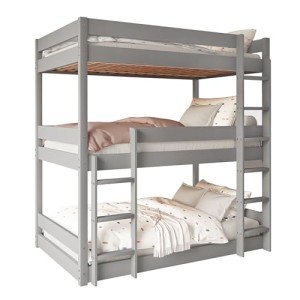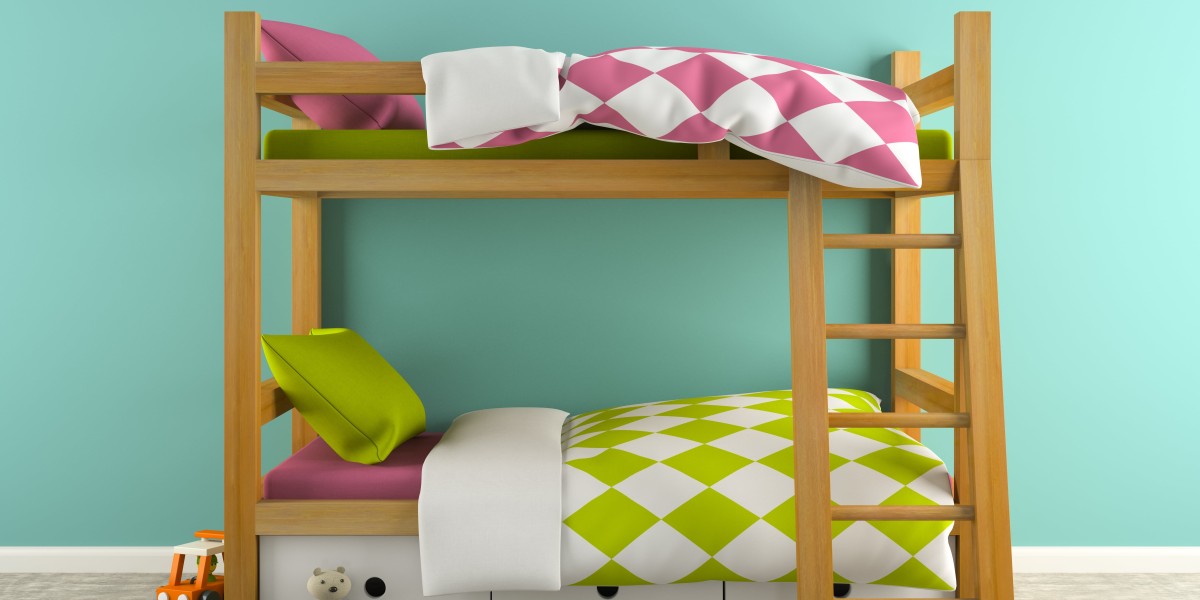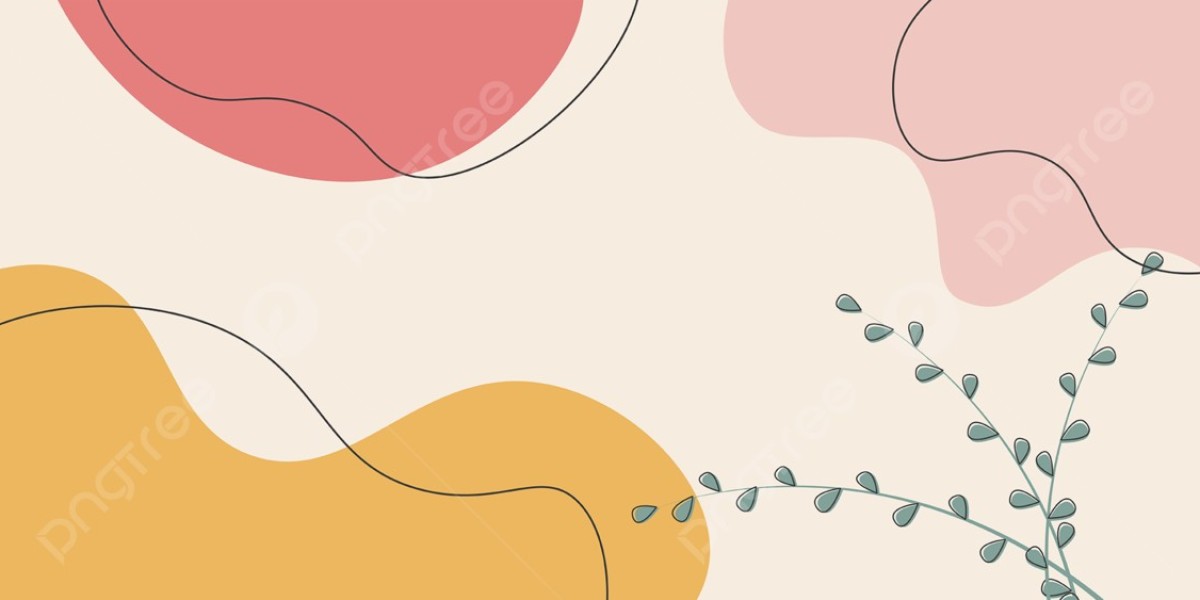Everything You Need to Know About Triple Sleepers
When it pertains to taking full advantage of space in a kid's bed room or accommodating extra visitors, triple sleeper beds present a unique and practical service. Unlike conventional bunk beds that use two sleeping areas, triple sleepers offer three, making them a favorite amongst households with numerous children, small apartments, and even trip rentals. This post explores the functions, advantages, types, and considerations surrounding triple sleepers, guaranteeing that potential purchasers are educated before making a purchase.
What is a Triple Sleeper?
A triple sleeper is a type of bed developed to accommodate three people in a vertical stacking format. Typically, these beds are organized in a single vertical line, with one bed on the bottom, one in the middle, and one on top. They are available in different styles, products, and styles, making them a versatile option to fit varied room decors.
Advantages of Choosing a Triple Sleeper
Triple sleeper beds come with a myriad of advantages, including:
- Space Efficiency: Perfectly designed for smaller spaces, they permit three individuals to sleep comfortably without taking up much flooring space.
- Versatile Usage: Ideal for siblings, slumber parties, or visitor rooms, triple sleepers can accommodate various sleeping arrangements.
- Cost-efficient: In regards to price per sleeping space, triple sleepers can be more cost-effective than buying separate beds.
- Fun Factor: For children, bunk beds and triple sleepers typically add a component of playfulness and enjoyment to their room.
Table 1: Advantages of Triple Sleepers
| Benefit | Description |
|---|---|
| Space Efficiency | Takes full advantage of floor space in small spaces |
| Versatile Usage | Suitable for children, visitors, and sleepovers |
| Economical | More economical compared to separate beds |
| Enjoyable Factor | Supplies a lively design that interest kids |
Types of Triple Sleepers
While triple sleepers usually have a basic setup, they are available in a few various designs to match various requirements and aesthetic appeals:
1. Standard Triple Sleeper
- Offers an uncomplicated design with three stacked beds.
- Normally features a ladder for access to the upper bunks.
2. Lofted Triple Sleeper
- The bottom bunk is a lofted design, supplying space for a desk, play location, or additional storage underneath.
- Perfect for maximizing utility in smaller rooms.
3. Triple Sleeper with Futon
- Combines a upper bunk with a futon or pull-out bed on the lower level.
- Great for lounge space throughout the day while offering sleeping arrangements during the night.
4. Corner Triple Sleeper
- Created to suit a corner of a space, using space effectively.
- Can develop a cozy atmosphere while permitting easy access to all beds.
Table 2: Types of Triple Sleepers
| Type | Description |
|---|---|
| Traditional Triple Sleeper | Standard stacked style with three beds |
| Lofted Triple Sleeper | Bottom bunk permits additional space beneath |
| Triple Sleeper with Futon | Combines a bunk with a futon for daytime lounging |
| Corner Triple Sleeper | Optimizes corner space, perfect for smaller rooms |
Considerations When Buying a Triple Sleeper
Before acquiring a triple sleeper, prospective buyers need to take into account a number of elements:
- Room Size: Measure the measurements of the space to make sure the triple sleeper fits easily without overwhelming the space.
- Ceiling Height: Verify that the height of the bed will appropriate for the room's ceiling, offering enough space for the upper bunk while avoiding any safety dangers.
- Weight Capacity: Check the weight limitation of the frames to guarantee they can safely support the users.
- Material and Durability: Select products that make sure longevity, such as strong wood or metal frames.
- Security Features: Look for models that consist of guardrails, durable construction, and a stable ladder for safe access to the upper bunks.
Table 3: Considerations for Purchasing
| Element | Description |
|---|---|
| Space Size | Guarantee the bed fits conveniently in the designated space |
| Ceiling Height | Validate the height appropriates for the space's measurements |
| Weight Capacity | Inspect frame limitations to support designated users |
| Product and Durability | Choose for long-lasting materials like solid wood or metal |
| Security Features | Try to find guardrails and steady ladders for added defense |
Frequently Asked Questions About Triple Sleepers
Q1: Are triple sleepers safe for children?
Yes, as long as they are effectively constructed and equipped with safety features such as guardrails and a stable ladder. It's necessary for parents to monitor young kids when using the top bunk.
Q2: How easy is it to assemble a triple sleeper?
Many triple sleepers featured in-depth assembly guidelines and all necessary tools. Typically, they can be put together within a few hours, depending upon the design.
Q3: Can adults use a triple sleeper?
Definitely! As long as the weight capability suffices and the frame is strong, numerous triple sleepers can support adults along with children.
Q4: Do triple sleepers come in different designs?
Yes, there are various designs and styles offered, from conventional to contemporary, enabling clients to pick one that fits their design.
Q5: How do I maintain a triple sleeper?
Routinely check the structure for stability, tighten screws as essential, and tidy appropriately, typically by wiping the surface areas with a damp fabric.
Triple Sleeper Bed - see post, sleepers present an innovative solution to space restrictions while offering an enjoyable and functional sleeping arrangement. With numerous types and considerations to select from, households can select the perfect design to match both their needs and design choices. When making such a purchase, prioritizing safety, resilience, and room dimensions will go a long way in making sure the satisfaction and wellness of users. Ultimately, a triple sleeper is more than just a bed; it is a useful addition that promotes pajama parties, brother or sister bonding, and relaxing nights for all included.









